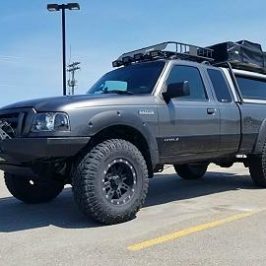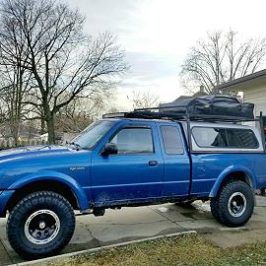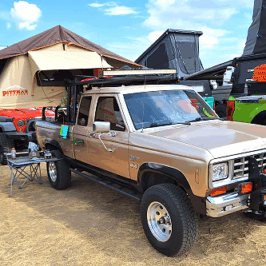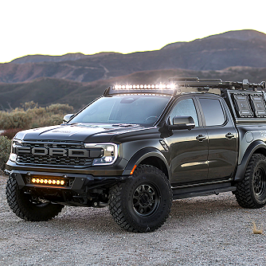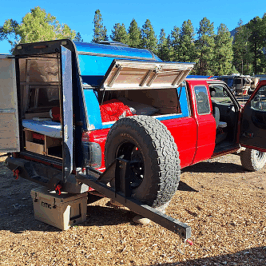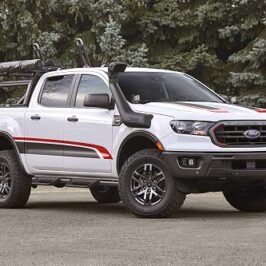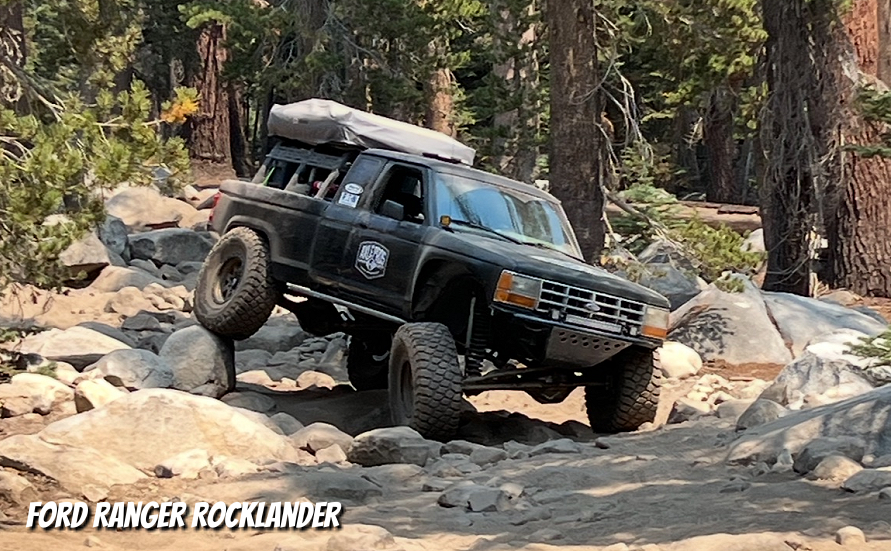
What is a Rocklander? The Hybrid Off-Road Build Explained
In the off-road world, we’ve all heard of rockcrawlers and overlanders. One is built to claw over boulders and technical trails, the other for long-distance adventure and self-sufficiency. But lately a new term has been gaining traction: the rocklander.
So, what exactly is a rocklander, and how does it differ from other builds? Let’s break it down.
What is a Rocklander?
A rocklander is a hybrid off-road build that blends the hardcore crawling ability of a rockcrawler with the long-range self-sufficiency of an overlander. It’s not about extremes in one direction but about balance:
- Crawler DNA: Armor, clearance, articulation, and drivetrain upgrades.
- Overlander DNA: Camping, storage, recovery gear, and comfort for extended travel.
The result is a rig that can conquer boulder-strewn trails in the day, then serve as a comfortable basecamp at night.
Why “Rocklander”?
The name is basically a mash-up of rockcrawler and overlander.
- Rockcrawlers are built for extreme technical trails with big tires, lockers, armor, and slow precision driving.
- Overlanders are built for long-distance travel and self-sufficiency, often featuring rooftop tents, storage solutions, water and fuel capacity, and cooking setups.
- Rocklanders combine both approaches — tough enough for serious crawling but still equipped to live out of for multi-day trips.
Think of it as the middle ground: you might see a heavily armored 4×4 with a rooftop tent, winch, and 37s — capable of Moab trails one day, then camping out on the trail for a week.
The Rise of the Rocklander
The term “rocklander” started popping up in off-road communities as builders realized that traditional overland rigs couldn’t always handle the hardest trails, and pure crawlers weren’t suited for long-distance travel.
Where a crawler sacrifices road manners and living space, and an overlander sometimes lacks hardcore trail chops, the rocklander strikes a balance between the two.
The rocklander movement bridges the gap — rigs that can both tackle the Rubicon and carry you deep into the backcountry for days at a time. It reflects a shift toward multi-purpose builds that aren’t confined to one style of wheeling.
Rocklander vs. Other Off-Road Builds
| Build Type | Primary Focus | Common Features | Limitations |
|---|---|---|---|
| Rockcrawler | Maximum technical trail performance | 37–42” tires, lockers, 4:1 transfer case, full cage, hydro steering | Not highway-friendly, little room for camping gear |
| Overlander | Long-range travel & self-sufficiency | 33–35” tires, rooftop tent, fridge, storage drawers, fuel/water systems | Limited extreme trail ability |
| Rocklander | Balance of crawling & camping | 35–37” tires, lockers, winch, armor, rooftop tent, storage system | Compromise: heavier than crawlers, less range than pure overlanders |
| General Off-Road Truck | Weekend fun & moderate trails | 31–35” tires, mild lift, winch, skid plates, cooler tossed in bed | Doesn’t excel at crawling or extended trips |
The rocklander sits in the middle of this spectrum, designed to handle both technical trails and multi-day travel.
Tire Size and the Rocklander Identity
Rockcrawlers: Serious crawlers almost always run 37s or larger. This isn’t just for bragging rights — it’s about clearance, approach/departure, breakover angles, and traction on technical obstacles. Many off-roaders consider 37″ the “entry point” for a true crawler.
Overlanders: Typical overland builds prioritize drivability, weight, and fuel economy. Tires are usually 33–35 inches because they balance capability with road manners and efficiency.
Rocklanders (Middle Ground): This is where it gets interesting. Rocklanders borrow toughness from crawlers, but they still need to handle highway miles and carry camping gear without everything breaking.
35-inch tires are often the “sweet spot” — big enough to handle serious rock trails and meet the minimum suggested by Rocklander Route but still small/light enough to reduce stress on axles, gears, and driveline when hauling overland weight.
37-inch tires push the truck closer to true crawler status — amazing for clearance and trail cred, but they demand stronger axles, deeper gears, and more power. For many people, that’s more commitment (and cost) than they want in a dual-purpose rig.
Common Traits of Rocklander Builds
No matter the vehicle platform, most rocklanders share these traits:
- 35-inch to 37-inch tires with beadlock wheels for strength and trail performance.
- Locking differentials front and rear for traction in technical terrain.
- Transfer case with doubler or crawler gears for low-speed control.
- Armor including reinforced bumpers, rock sliders, and skid plates.
- Recovery gear like winches, traction boards, hi-lifts and recovery straps / ropes
- Rooftop tent or compact sleeping system.
- Camping comforts such as rooftop tents or compact sleeping system, drawer systems, and dual-battery setups.
- Onboard storage for food, water, and fuel.
- Upgraded suspension with long-travel or heavy-duty components.
It’s not about maxing out one category but about having enough of each to go anywhere and stay there comfortably.
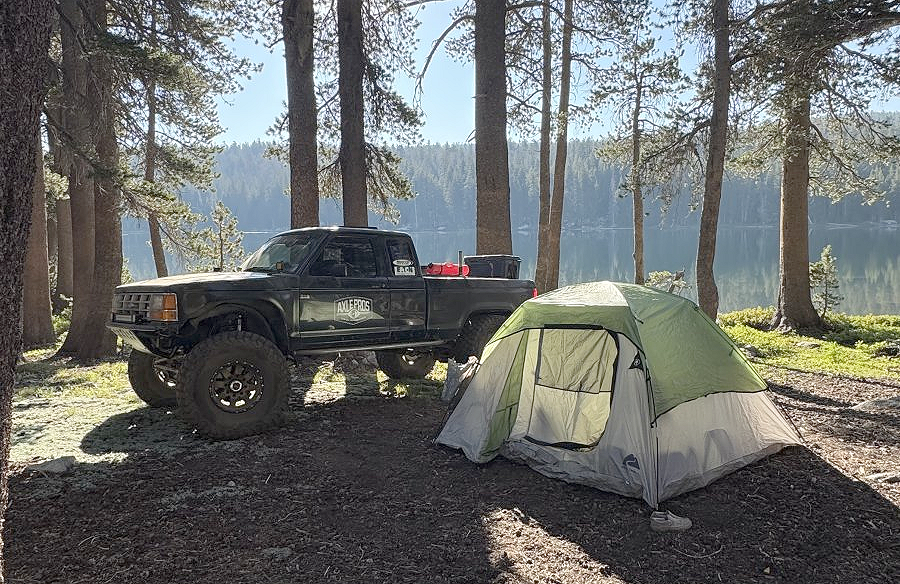
I don’t believe that you have to have a rooftop tent to be an overlander, just a place to sleep. I still prefer a ground tent.
Who Builds Rocklanders?
Rocklanders appeal to enthusiasts who don’t want to be boxed into one style of wheeling. A typical rocklander owner is someone who enjoys hardcore trails but also wants to camp out in remote areas. They value versatility, reliability, and self-sufficiency. Instead of towing a crawler to the trail, they want one rig that can do it all — crawl, camp, and travel.
Basically:
- Weekend warriors who want to camp on tough trails without giving up comfort.
- Expedition travelers who venture into terrain where a standard overlander might struggle.
- Crossover builders coming from crawling or overlanding backgrounds, blending the best of both.
Recommended Rocklander Build: 1983–2011 Ford Ranger
- Engine: Stock 4.0L OHV/SOHC or a 5.0L V8 swap for more torque.
- Transmission 4R55E auto or M5OD manual. V8 swaps often use AOD, 4R70W, or M5OD-R2.
- Transfer Case: Manual 1354 or 1350 with a doubler kit for crawl ratio improvements. Many V8 swaps use the BW4406.
- Axles (D44): Dana 44 / Ford 9-inch or Ford 8.8, geared to 4.88 for 35″ or 5.13 for 37” tires (see note below)
- Axles (D60): Dana 60 axles geared to 4.88 (V8 setups) or 5.13 for 37-40” tires (see note below)
- Lockers: Front and rear selectable lockers. (air locker or electric locker)
- Suspension: Extended radius arms or 3-link front with coils or coilovers for articulation and load carrying.
- Tires: 35″–37” mud terrains with beadlocks.
- Armor: Rock sliders, skid plates (engine, trans, fuel tank), heavy-duty bumpers.
- Recovery: 9,500–12,000 lb winch, recovery straps, traction boards.
- Overland Gear: Rooftop tent, ground tent, camper shell, water storage, dual battery system, fridge/freezer, extra fuel capacity.
- Interior: Secure storage for tools, spare parts, and camping gear.
This setup keeps the Ranger small and nimble enough for technical trails, but capable of carrying enough supplies for long weekends off the grid.
Note: I know people like to replace the Dana 35 TTB with a Dana 44, but if you’re going to use 37-inch or larger tire you should consider a Dana 60 instead. Yes, you can upgrade the Dana 44 and make it stronger for the 37’s, but why do that when you can just get a stronger Dana 60. The Dana 35 TTB can handle 35-inch tires and probably 36-inch tires if upgraded to Dana 44 spindle & hub assemblies.
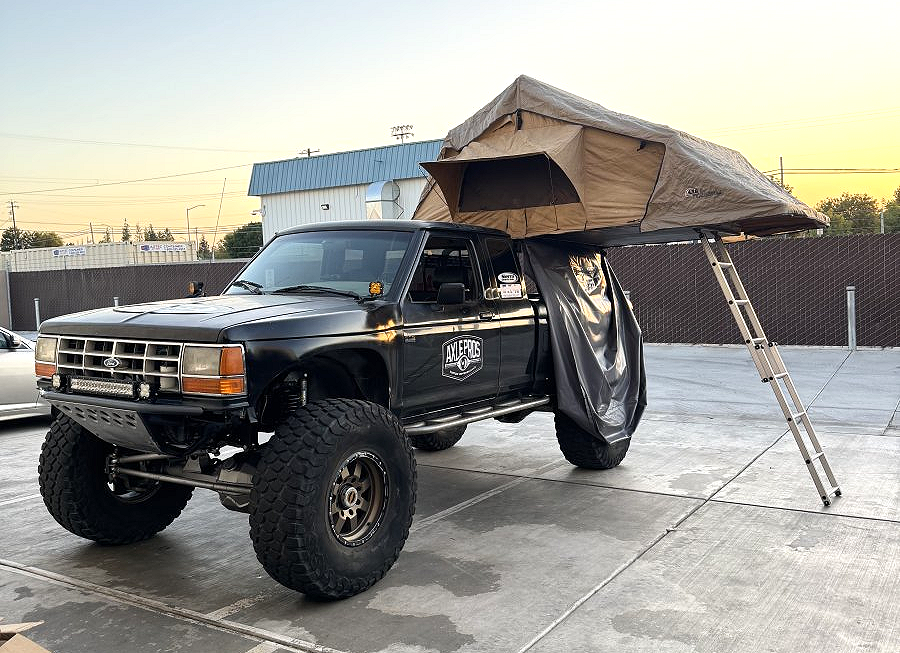
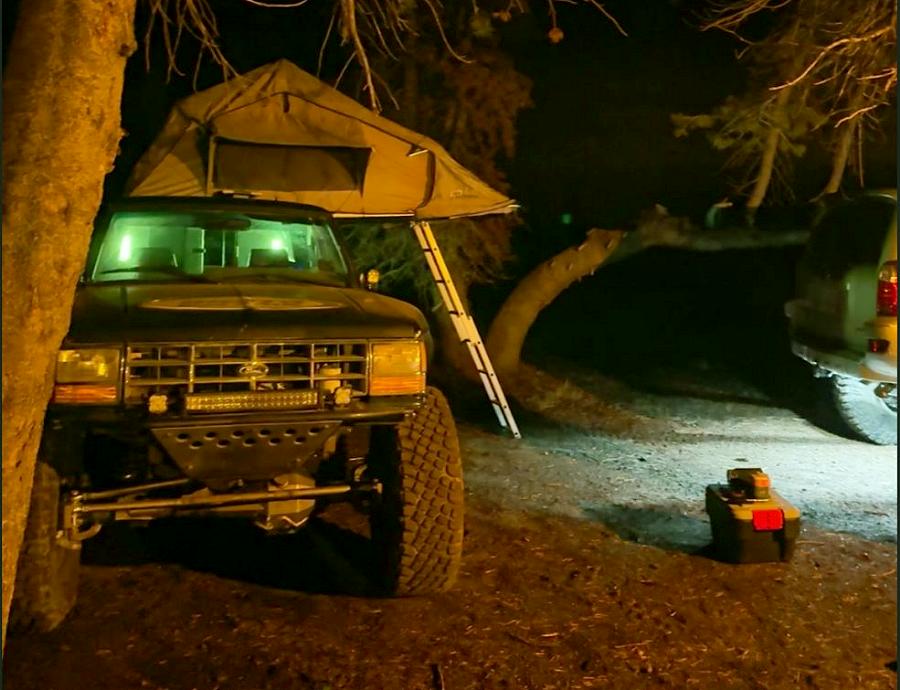
Next Gen Ranger Rocklander (2019+)
- Crawler DNA: 35” tires with front and rear lockers,
- Armor: Rock sliders, skid plates (engine, trans, fuel tank), heavy-duty bumpers.
- Overlander DNA: Rooftop tent, ground tent, camper shell, water storage, dual battery system, 12V fridge, extra fuel capacity.
- Recovery: 10,000–12,000 lb winch, recovery straps, traction boards.
- Interior: Secure storage for tools, spare parts, and camping gear.
- Why It Works: The Ranger’s size keeps it nimble but is large enough to carry everything you need and power to do it.
2019+ Ford Ranger FX4 / Tremor: Dana 60 Swap
- People have swapped Dana 60’s into the 2019+ Ford Ranger enabling it to run 37-inch tires.
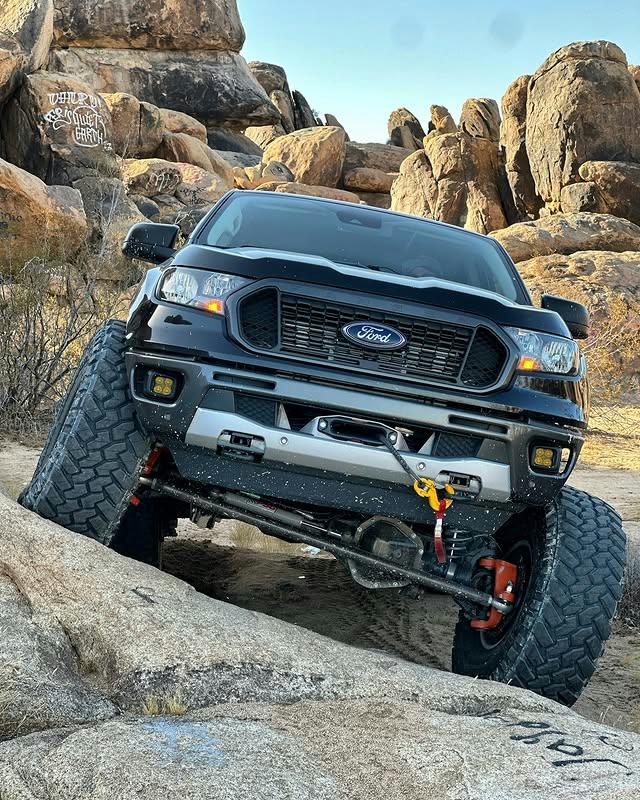
Ford Ranger Raptor: Portal Axles
- A Ford Ranger Raptor can be upgraded with a set of 74Weld 4-gear portal axle kit (originally built for the Bronco).
- With portals installed, a Ranger Raptor can fit 37-inch tires, combining clearance and gearing advantages.
- These portals only fit the Ranger Raptor M210 front axle, and not the M190 front axle on the non-Raptor Rangers.
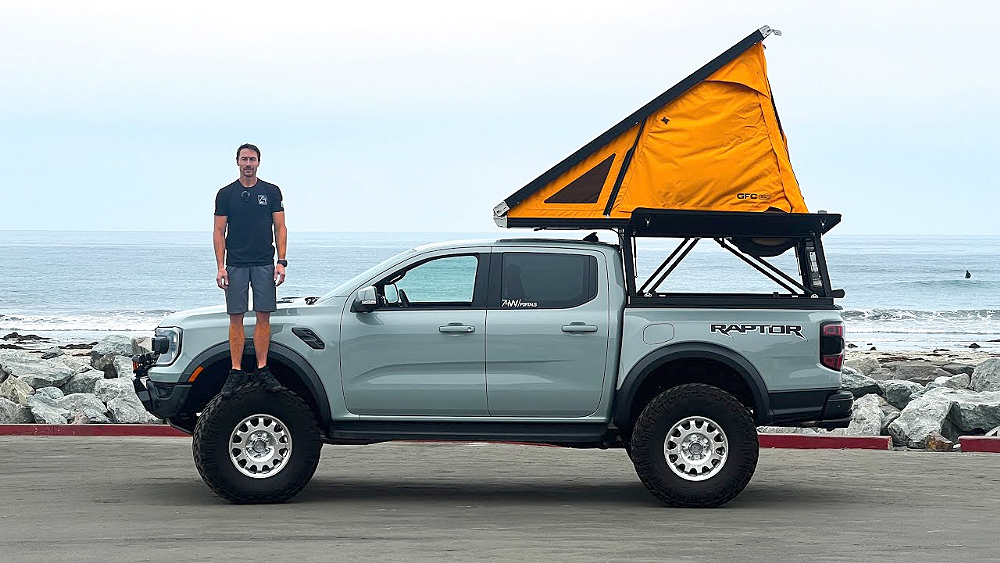
Other Popular Rocklander Builds
While you can build a rocklander out of almost any 4×4 platform, here are some of the most popular examples.
Jeep Wrangler JLU Rocklander
- Crawler DNA: Dana 60 axles, ARB lockers, 37” tires, 4.88 gears, long-arm suspension, high-clearance armor.
- Overlander DNA: Rooftop tent on rack, ARB fridge, dual-battery setup, rear storage drawers.
- Why It Works: The Wrangler already has trail pedigree. Add in camping comforts, and it becomes an expedition-ready crawler.
Toyota Tacoma Rocklander
- Crawler DNA: 35” tires on beadlocks, re-geared with lockers, full skid system, long-travel suspension.
- Overlander DNA: Goose Gear storage system, rooftop tent with awning, extended-range fuel/water setup.
- Why It Works: The Tacoma blends reliability with versatility, making it a favorite among hybrid builders.
Jeep Gladiator Rocklander
- Crawler DNA: 37” tires, re-geared axles, long-arm suspension, steering upgrades.
- Overlander DNA: Bed rack with rooftop tent, onboard water system, fridge/freezer combo.
- Why It Works: The Gladiator has a longer wheelbase than the Wrangler but offers the cargo space overlanders crave.
Toyota 4Runner Rocklander
- Crawler DNA: Solid axle swap (for hardcore builds), lockers, full underbody protection.
- Overlander DNA: Roof rack with tent, rear drawer system, auxiliary power for fridge and lighting.
- Why It Works: Provides enclosed space and comfort while still capable of tough trails.
Vehicles Shown:
For more information about the two Ford Rangers shown here, check out:
Alec’s Rock Crawling 1989 Ford Ranger
Final Thoughts
A rocklander is the ultimate do-it-all rig — not limited to crawling or overlanding but embracing the strengths of both. For Ranger fans, it’s an exciting way to build something unique that stands out from the sea of Jeeps and Toyotas. Whether you’re tackling boulder fields or setting up camp miles from the nearest road, a well-built rocklander gives you freedom to go further and stay longer.
About The Author
Jim Oaks is the founder of TheRangerStation.com, the longest-running Ford Ranger resource online since 1999. With over 25 years of hands-on experience building and modifying Ford Rangers — including magazine-featured builds like Project Transformer — Jim has become one of the most trusted authorities in the Ford Ranger off-road and enthusiast space. In 2019, he was loaned a Ranger FX4 by Ford Motor Company to test and document across the TransAmerica Trail. Jim continues to inspire and guide Ranger owners around the world.

